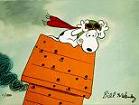Bullwinkle58
Posts: 11302
Joined: 2/24/2009
Status: offline

|
quote:
ORIGINAL: Q-Ball
There is no doubt that for many, like Canoerebel, the Allies are LOSING more aircraft than historical. Why? Probably to Panther's point, the Allies in AE are generally more aggressive than RL. It could be that advanced types aren't rated high enough to improve their survivability. This deserves further study.
It should be noted that almost every AE or WITP game I have seen is bloodier than RL, in all aspects. More combat, more naval fights, more air fights, everything.
Lots of good comments.
My experiences are only AI-related, and it gets huge windfalls in plane quantity out of the gate. Reasonable, but as an Allied player I've always felt as if I was trying to hold back the sea, especially in Burma. I went south in early 1943, taking Cox's B and Akyab, then, with an all-armor spearhead, charging down to Prome while simultaneously taking the dot hex at Ramree Island and building it furiously as a supply beachhead. I ran infantry and base support down to Prome and finally took Rangoon in September. I'm now hooking back northeast to a cut-off Mandalay and assorted small bases to clean up.
All during this effort the AI mounted massive, multi-base raids--120-150 fighters and 60-80 bomber raids, day after day. They came from 3-4 large bases like Moulmein and Pegu, and were usually perfectly coordinated. I threw everything I could at them, but, as Nemo says, you can't. I finally moved all the AA in I could (it's seldom mentioned here, but it's a killer in AE), and pulled my planes back. Having 9-12 Hurricanes rise to meet 150 incoming raiders was getting me nowhere.
What happened was . . . not much. LBA is not the King of All Warfare it was in WITP. They take out supplies, hole runways, and cause some LCU casualties and disruption, but they don't stop determined ground advances. Only other ground forces do that.
As for the P-38, I too have been disappointed in its performance as well as numbers. It was a good buy in mid-1942, and I moved what I had to PM. Swept Rabaul, escorted raids on Lae, etc., but it was fragile and in need of a lot of maintenance. For the space and maintenance resources consumed I think the late P-40 models are about as good.
What has been a nice surprise is how great the P-47 is when they show up. A flying tank, easy to keep flying, a great dogfighter as well as gournd attack unit. You get a lot in the last third of 1943 and they finally turned the tide in Burma. Like a knife through butter. Like Canoerebel I have one or two P-38 units hanging around, but they've been bypassed. I think they were better in RL than the game lets them be, but that's the way it goes.
Hellcats are pretty sweet too.
_____________________________
The Moose
|
 Printable Version
Printable Version







 " pool of japanese planes makes it very, very hard.
" pool of japanese planes makes it very, very hard. 











 New Messages
New Messages No New Messages
No New Messages Hot Topic w/ New Messages
Hot Topic w/ New Messages Hot Topic w/o New Messages
Hot Topic w/o New Messages Locked w/ New Messages
Locked w/ New Messages Locked w/o New Messages
Locked w/o New Messages Post New Thread
Post New Thread